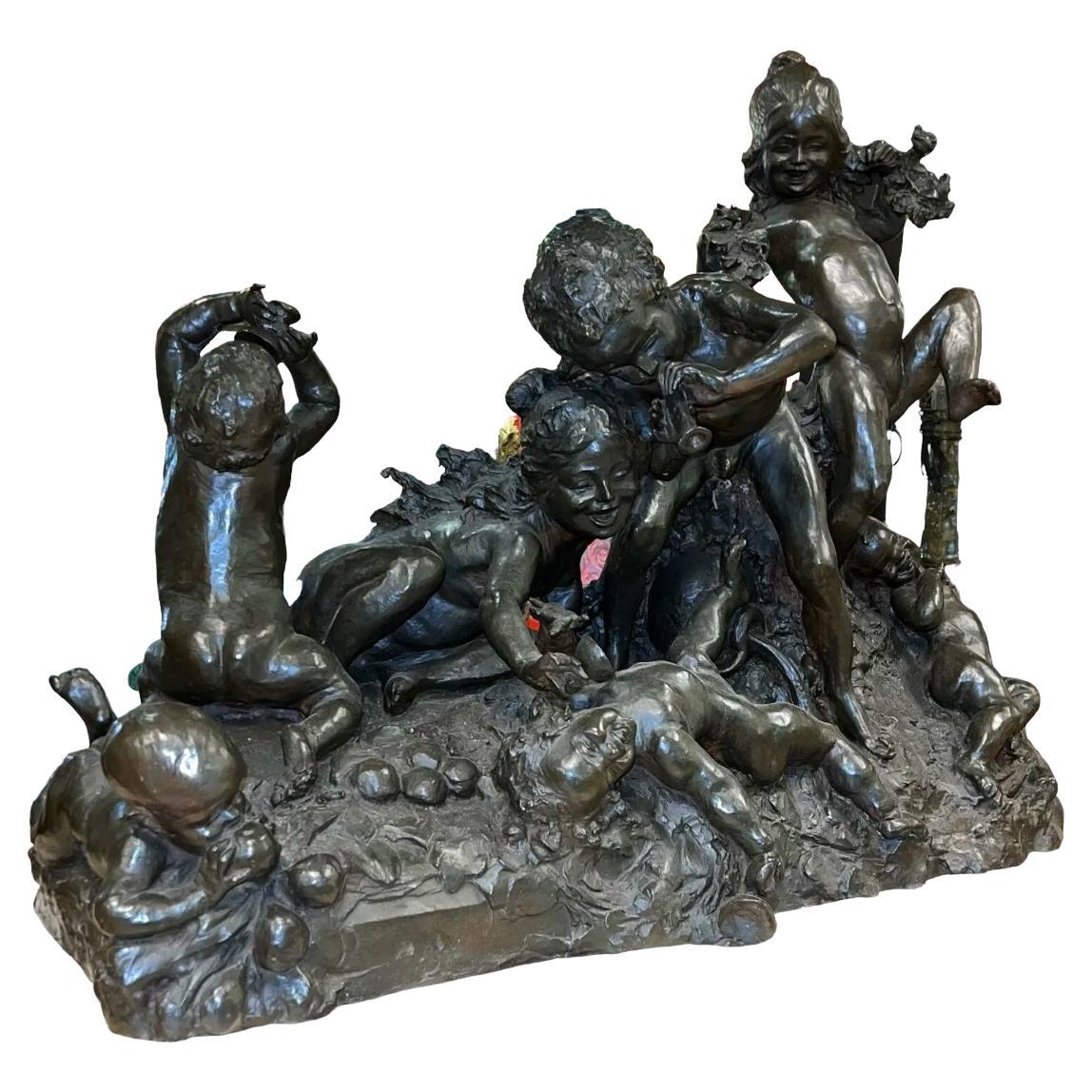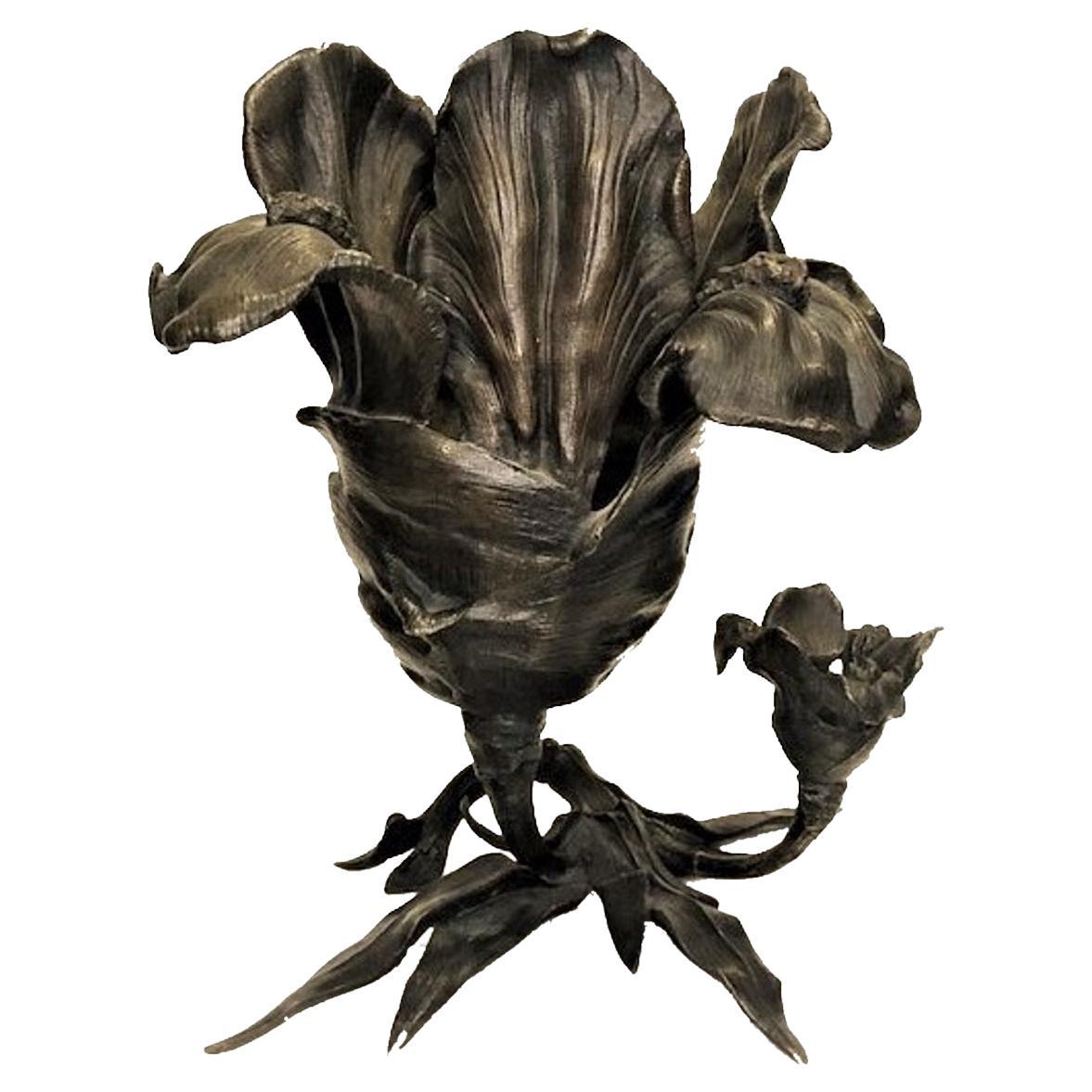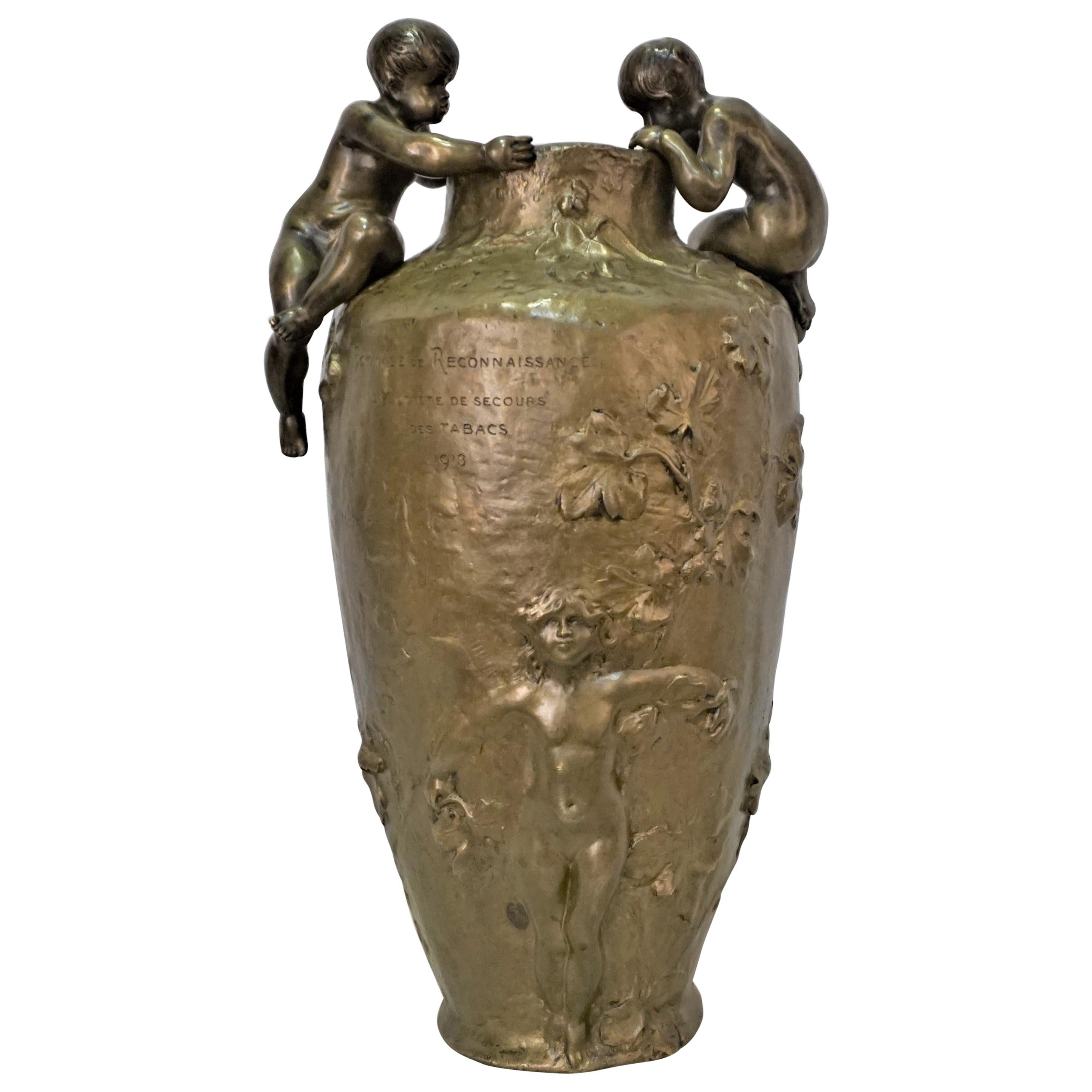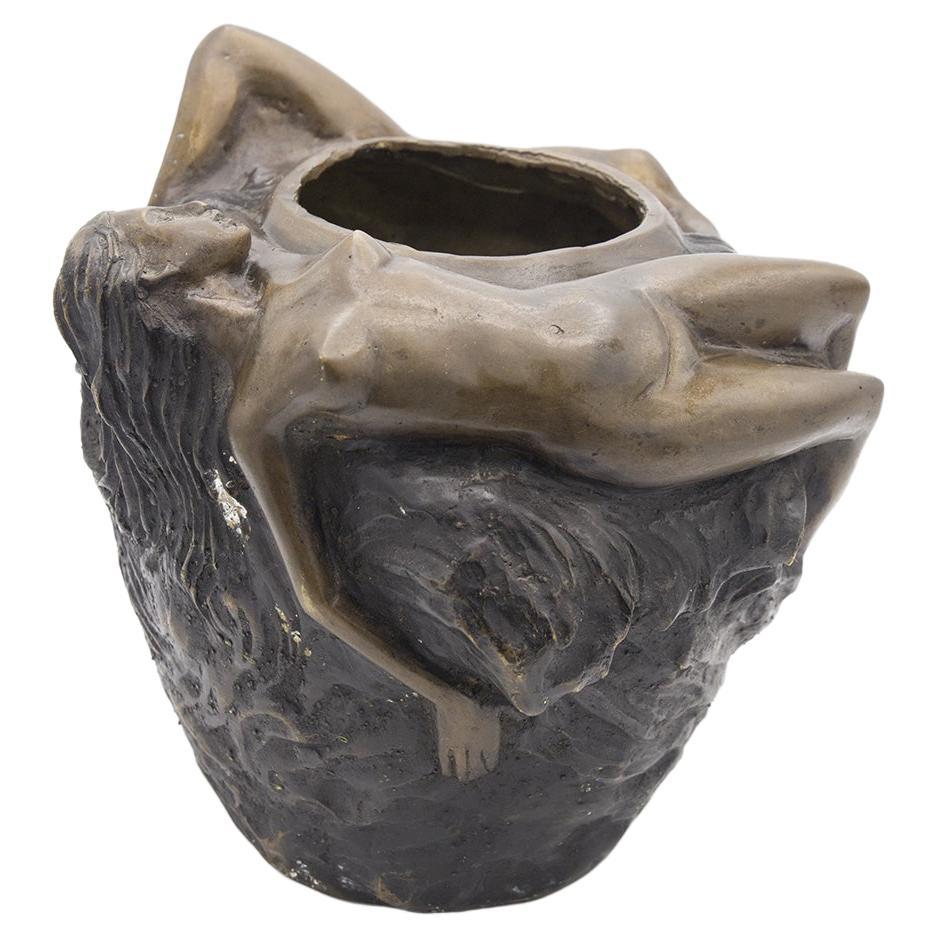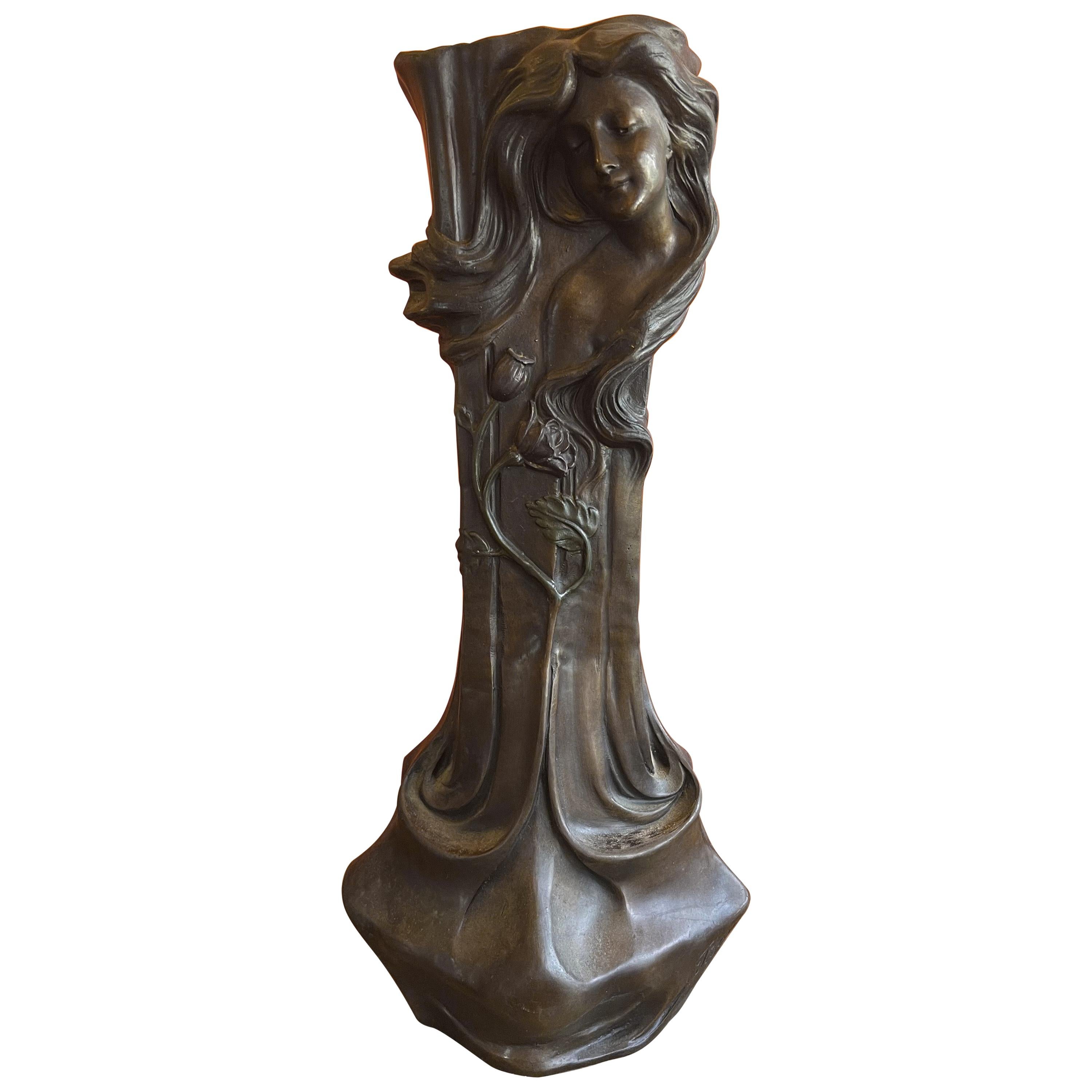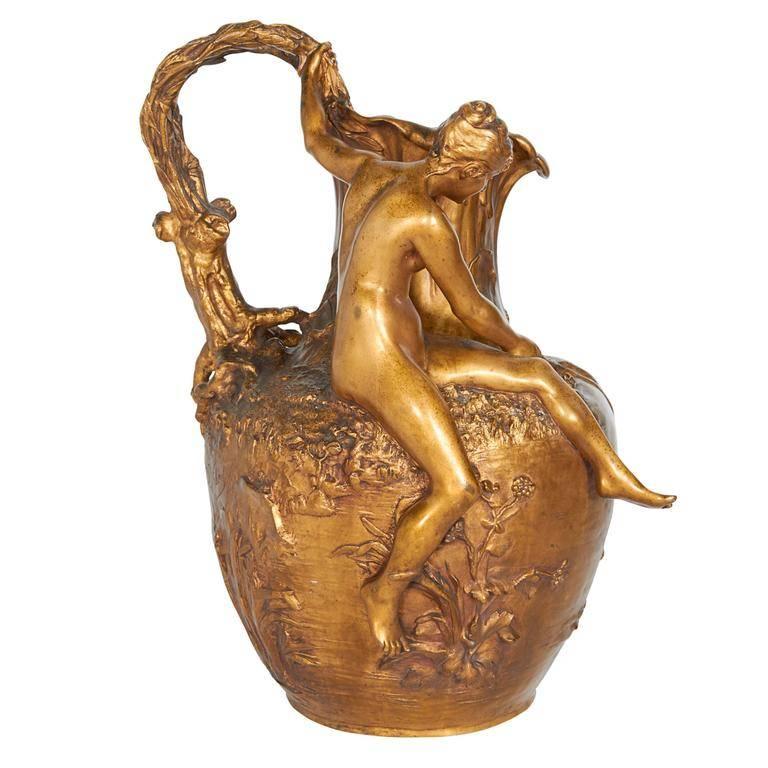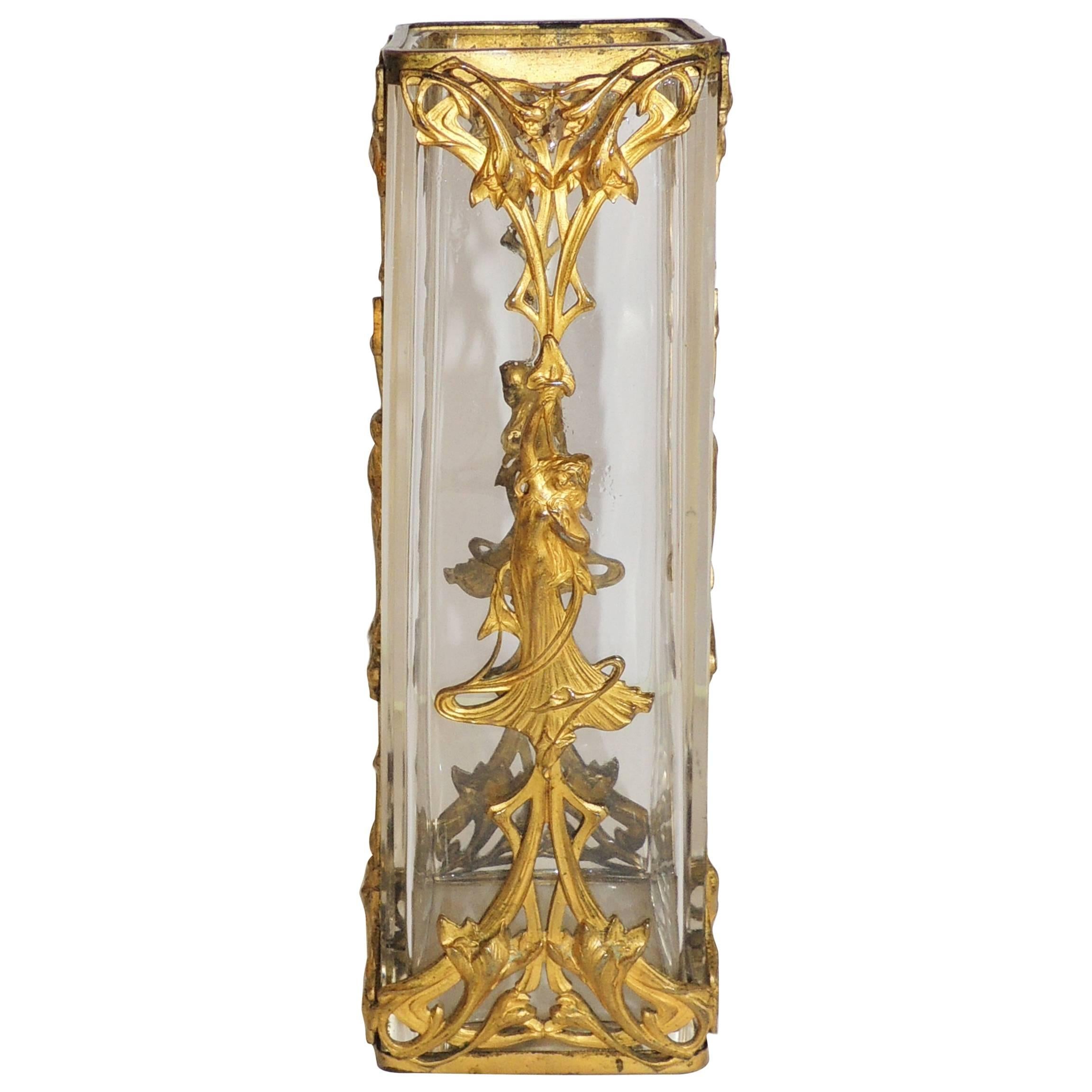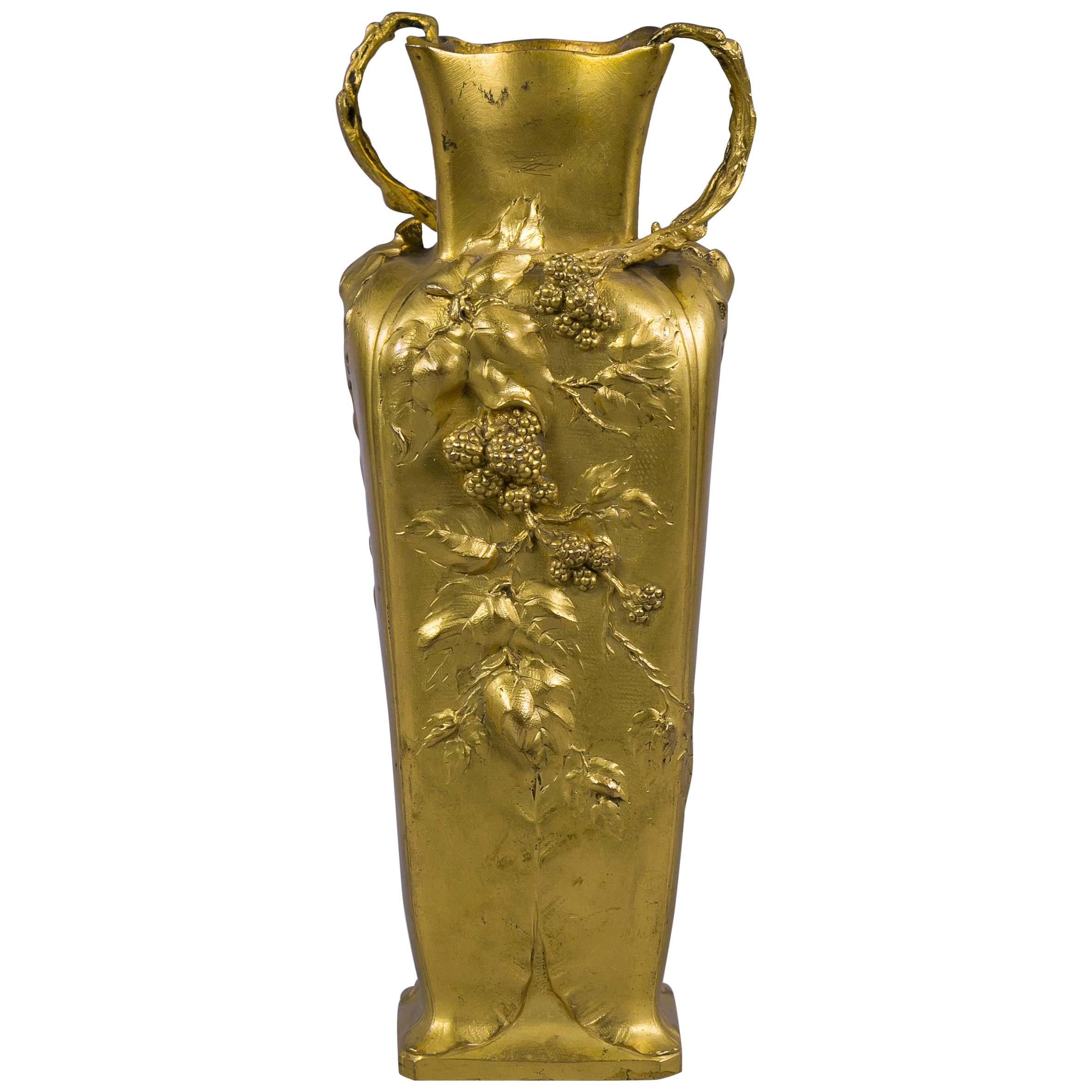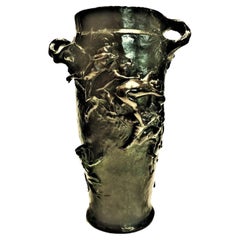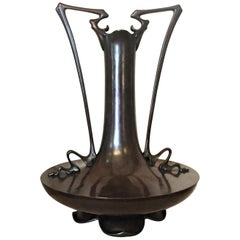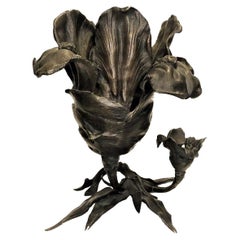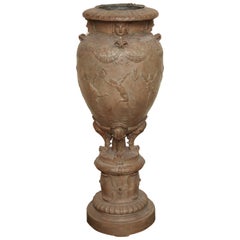
Gustave-Joseph Chéret, Art Nouveau Patinated Bronze Figural Vase, circa 1882
View Similar Items
Want more images or videos?
Request additional images or videos from the seller
1 of 9
Gustave-Joseph Chéret, Art Nouveau Patinated Bronze Figural Vase, circa 1882
About the Item
- Creator:Eugene Soleau (Maker),Gustave-Joseph Chéret (Designer)
- Dimensions:Height: 14.5 in (36.83 cm)Diameter: 5.75 in (14.61 cm)
- Style:Art Nouveau (Of the Period)
- Materials and Techniques:Bronze,Patinated
- Place of Origin:
- Period:
- Date of Manufacture:circa 1882
- Condition:Wear consistent with age and use. We make our best effort to provide a fair and descriptive condition report. Please examine the photos attentively. Send message to this seller to request more details or discuss price.
- Seller Location:New York, NY
- Reference Number:1stDibs: LU2819310586021
About the Seller
5.0
Vetted Seller
These experienced sellers undergo a comprehensive evaluation by our team of in-house experts.
Established in 1993
1stDibs seller since 2017
68 sales on 1stDibs
Typical response time: 2 hours
More From This SellerView All
- Gustave-Joseph Chéret, French Belle Époque Figural Bronze Vase, ca. 1885By Gustave-Joseph ChéretLocated in New York, NYGustave-Joseph Chéret French Belle Époque Patinated Bronze Figural Flower Vase ca. 1882 Signed ‘Joseph Chéret’ and E. Soleau. Editr. Paris Exqu...Category
Antique 1880s French Belle Époque Vases
MaterialsBronze
- Japanese Art Nouveau Meiji Period Patinated Bronze Vase, circa 1900Located in New York, NYAlthough unmarked, this rare and important, grand but at the same exquisite patinated bronze vase has just a very few little details, defying the shape of the handles, as well as the...Category
Antique Early 1900s Japanese Art Nouveau Vases
MaterialsBronze
- French Art Nouveau Patinated Bronze Sculptural Iris Vase, ca. 1900Located in New York, NYABOUT IRIS The iris is a special and mysterious flower. Not only because of its striking appearance, but also from an artistic and historical point of view. It is also like a work of art, as though created by Mother Nature. The unique leaves of this plant not only create wonderful shadow casts, but also look as if they were painted by hand. It's no wonder that iris acts as the muse for countless artists, and can be seen in many famous works of art. The iris was first spotted in the time of Pharaoh Thutmose, in 1504 BC. He had the iris inscribed into the wall reliefs of a temple as a sign of his power, as well as decorating his sceptre with motifs of the flower. Since then, the iris has been a symbol of victory in Egypt. But the symbolism of the iris goes further than that. In Japan, the flower represents courage and is the symbol of the boys' festival. In Islamic cultures, the iris is a symbol of prosperity. In Europe, the flower was a popular weapon symbol in the Middle Ages and stood for chivalry. And in Christianity, the iris was seen as a symbol of the trinity because of its three-part flowers. With more than 300 varieties, the iris is now the most popular flower among growers and gardeners following the rose. Countless artists use the iris in their works and the flower is present in all eras. You can see the flower on furniture, vases, jewelry, fabrics, sculptures, coats of arms and much more. Did you know that the iris is also called the sword lily? It's not a coincidence that it used to symbolize physical and emotional pain and suffering caused by a weapon. We also see the flower in religious art, where it's often associated with Mary and Jesus. The iris is also associated with the Greek goddess Iris, where the flower symbolizes reconciliation and divine messages. This is also reflected in many paintings. Finally, the iris is also visible in Dutch and Flemish still-life paintings. This can be in a religious form, incorporated into an object or as a decorative flower. In the Art Nouveau art movement, the iris (along with other plants, such as the birch) was often used as an expression of feminine beauty. With its almost otherworldly appearance, the iris is perfectly suited to the Art Nouveau aesthetic and is featured in many well-known works of art. The poet of that era, Hermann Hesse...Category
Antique Early 1900s French Art Nouveau Planters, Cachepots and Jardinières
MaterialsBronze
- Alexandre Vibert, French Art Nouveau Figural Gilt Bronze Ewer, circa 1900By Alexandre VibertLocated in New York, NYAn Art Nouveau gilt bronze lobed ewer by Alexandre Vibert (French, 1847-1909), produced within the early 20th century period, depicting a classical nude female figure on the bank of ...Category
Antique Early 1900s French Art Nouveau Urns
MaterialsBronze
- French Beaux Arts, Patinated Bronze Figural Vase by A. Bofill, Ca. 1900By Antoine BofillLocated in New York, NYAntoine Bofill (Spanish-French, 1875-1925) was a Spanish artist and member of the Animalier movement of the 19th century. Best known for his small, decorative bronze sculptures, Bofi...Category
Antique Early 1900s French Beaux Arts Vases
MaterialsBronze
- Charles Vital-Cornu, French Art Nouveau Bronze Sculptural Floral Vase, 1900sBy Charles Vital-CornuLocated in New York, NYCharles Vital-Cornu (French, 1851 - 1927), Jouffroy’s and Pils’ pupil, he acquired a skillfulness mastery in carving marbles and producing bronzes. He used several patinas in his production. Indeed, if his pieces' embodiments are often golden-brown colored, the hollow part are darker. His figures, hands, faces, and bodies are of a great quality. Charles Vital-Cornu had participated in numerous annual ‘‘Salons’’ organized in Paris by ‘‘la Société des Artistes Français’’ where he got several awards, such as a mention of Honor in 1880 and 1881, a third class medal in 1882, a travelling grant in 1883, a second class medal in 1886, a bronze medal at the 1889 World Fair and, finally, a silver medal at the 1900 World Fair at the Grand palace...Category
Antique Early 1900s French Art Nouveau Vases
MaterialsBronze
$6,800 Sale Price20% Off
You May Also Like
- Gustave-Joseph Chéret Terracotta Jardiniere UrnBy Gustave-Joseph ChéretLocated in New York, NYFinely executed urn by sculptor Joseph Chéret (French, 1838-1894) inset with period aluminum liner for flowers. Epitomizes the mid-19th century Second Em...Category
Antique Late 19th Century French Napoleon III Planters, Cachepots and Ja...
MaterialsTerracotta
- Frolicking Putti Bronze Sculpture After Joseph Gustave Cheret (1838-1894)By Gustave-Joseph ChéretLocated in New York, NYVery large and finely cast bronze sculpture of frolicking cherubs after the French sculptor, Joseph Gustave Cheret (1838-1894).Category
Early 20th Century French Figurative Sculptures
MaterialsBronze
- Paul Moreau-Vauthier a Patinated Bronze Figural VaseBy Paul Moreau-VauthierLocated in Fairfax, VACast bronze with a young female sprite and a putto climbing leafy tree and two figural putto handles. Presentation piece.Category
Antique Early 1900s French Art Nouveau Vases
MaterialsBronze
- Art Nouveau/Art Deco Large Glass Vase with Patinated Bronze Finished BaseLocated in Fairfax, VAVery large Art Nouveau- Art Deco multi-color glass vase with decorative metalwork mountings that is a beautiful example of the iridescent glass work that is done in late 19th century...Category
Early 20th Century Czech Art Nouveau Vases
MaterialsMetal
- French Art Nouveau Bronze VaseLocated in Milano, ITBeautiful French bronze vase from the Art Nouveau period, made during the early 1900s, fine French manufacture. The vase is made entirely of bronze,...Category
Antique Early 1900s Italian Art Nouveau Vases
MaterialsBronze
- Patinated Bronze Art Nouveau Vase with Maiden & Floral Design by Francesco FloraLocated in San Diego, CAGorgeous patinated bronze art nouveau vase with maiden & floral design by Francesco Flora, circa 1910s. The vase has wonderful detail and is in very go...Category
Early 20th Century Japanese Art Nouveau Vases
MaterialsBronze


